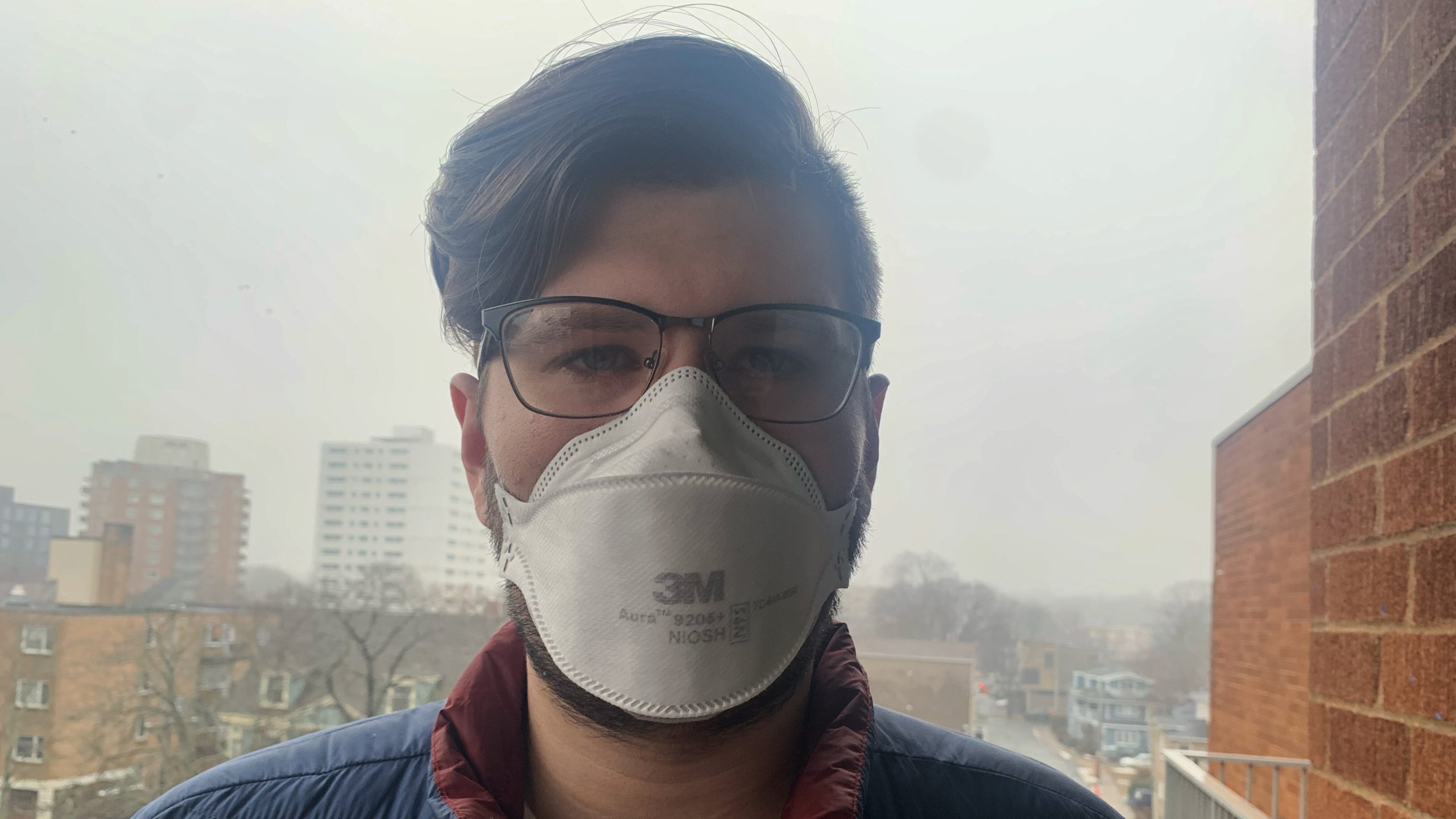What mask should Nova Scotians be wearing in the midst of Omicron?
Health officials say simple cloth masks are no longer sufficient and respirators such as N95s offer the best protection

caption
Jamie Watton is wearing an N95 respirator mask, In Halifax.With COVID-19 cases soaring, Canada’s top doctors say it’s time for Canadians to up their mask game.
“For the general public we are now recommending a properly fitted three-layer non-medical mask, cloth mask or medical mask,” Nova Scotia’s chief medical officer of health, Dr. Robert Strang, said in an interview with Global News on December 30.
His comments are echoed by Dr. Theresa Tam, the chief public health officer of Canada, who recommended Canadians ditch their single-layer cloth masks for at least a three-layer-surgical mask and suggested an N95 mask if possible.
But what’s the difference?
A three-layer mask is typically made of two layers of tightly woven fabric with a middle layer for filtration. N95s and their cousins the KN95s are respirators that filter out microscopic contaminants.
Respirators were initially recommended only for health-care professionals, but more and more Nova Scotians, including students and teachers returning to school, are opting to use N95s and KN95s. This is due to their ability to filter out 95 per cent of particles in the air.
Whichever type you choose, a well-fitting mask should be big enough to fully cover your nose, mouth and chin and not have any gaps between your face and mask, according to Nova Scotia’s COVID-19 website.
A well-fitting 3-ply cloth mask or medical mask should:
• allow for easy breathing
• be large enough to completely cover your nose, mouth, and chin comfortably without gaps
• fit securely with ties and ear loops
• be comfortable and not require frequent adjustments pic.twitter.com/f1WiCDWJTf— Health & Wellness (@nshealth) January 10, 2022
The site also has tips on how you can make your mask fit better, including adjusting the ties, bands or ear loops.
There are small differences between the different types of respirators.
While they both filter out about the same percentage of particles, they are subject to different requirements. KN95s are made to a Chinese standard while N95s conform to a U.S. one. They are functionally identical.
The Public Health Agency of Canada emphasizes that when buying these types of masks to make sure they are approved by Health Canada. The U.S. Centres for Disease Control has warned that 60 per cent of N95 respirators sold in the U.S. are counterfeit.
N95 and KN95 masks differ from disposable surgical masks because if stored correctly they can be reused up to five times. The provincial website outlines that as long as your mask isn’t damaged, damp or dirty, you should store it in a paper or cloth bag until you need to wear it again.
While Tam recommends them, respirators such as N95s and KN95s may be harder to come by than cloth or disposable masks.
About the author
Hannah Bing
Hannah Bing is a Halifax based writer who grew up in Nova Scotia. She loves writing about music, animals and her community. Her interests include...
